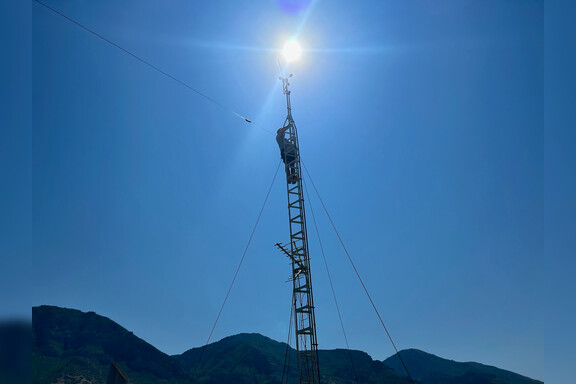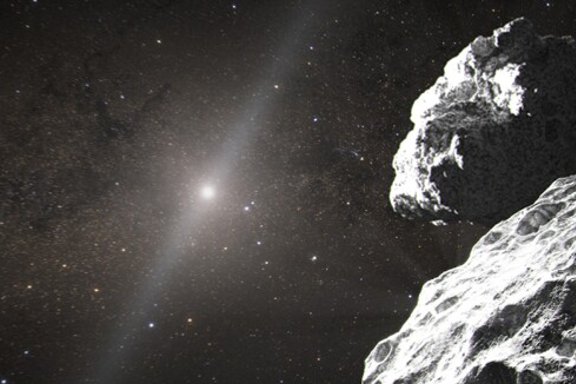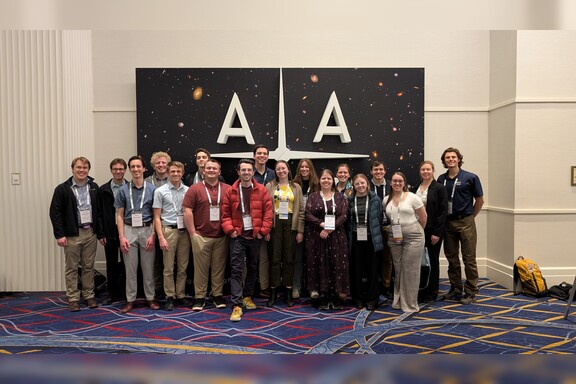
Photo by Donovan Kelly/BYU Photo
By Tyler Stahle, May 09, 2022
There’s an object deep in the solar system that has befuddled modern scientists for years.
The Kuiper Belt lies beyond Neptune and is populated by many icy bodies, similar to the asteroid belt. And while you’ve likely heard of Pluto — the most famous member of the Kuiper Belt — you’re probably not as familiar with the second most famous object, the spinning dwarf planet Haumea.
Scientists have no idea how this dwarf planet came to be, nor why its properties are so aberrant. For instance, Haumea is one of the fastest spinning objects in the solar system and is covered in crystallized water. Because it spins so fast, its shape becomes distorted, making it look like a football. Several other Kuiper belt objects, with similar features to Haumea, have long been thought to have been pieces of Haumea, broken off during an enormous collision. These bodies, often called the Haumea family, are central to the mystery of Haumea’s origin.
Understanding its origin has been a real head-scratcher for scientists since Haumea’s discovery in 2005. In 2012, scientists concluded that “various models have been proposed to match these unusual constraints, although so far none of these match the full set.”
But now the key element has been found.
In a study published in the scientific journal Nature Communications, BYU doctoral student Benjamin Proudfoot and BYU astronomy professor Darin Ragozzine detail the planet’s unique creation, solving one of astronomy’s puzzles.
The breakthrough for Proudfoot and Ragozzine came when they took a step back and considered the dwarf planet in the context of the broader solar system creation. Rather than applying their knowledge about traditional asteroid formation, Proudfoot looked at how Haumea and its family would have been affected by Neptune’s changing orbit in the early solar system.
Photo by NASA Science
Reframing the question guided Proudfoot to the discovery.
“When the solar system first formed, astronomers think that Neptune and Uranus formed much closer to the sun than they currently are,” said Proudfoot. “Beyond this, a large belt of Pluto-sized bodies was slowly forming. Over time, gravity from these bodies pulled Neptune outwards, colliding with the belt and flinging Pluto-sized bodies like Haumea across the solar system. Eventually forming what we see today as the Kuiper belt.”
Proudfoot thinks this massive solar system-wide upheaval, could have led to a collision between Haumea and a large moon, creating nearby Haumea family members and the two small moons seen today. Understanding the circumstances of the collision, especially its timing, proved to be key to finally putting together a unified story.
“When the collision between Haumea and its moon happens during this upheaval, it changes the pattern of orbits of the Haumea family, leading to a much better match to astronomical observations,” noted Proudfoot.
Solving the mystery of Haumea’s formation now opens the door to greater understanding of the outer solar system.
“We took a step back and re-evaluated some assumptions that we were making,” said Ragozzine, who was a member of the original research team that discovered the Haumea family in 2005 as a Ph.D. student. “Taking a big picture view helped all of the pieces come together. We’re starting to peek behind the curtain of the solar system.”
For Proudfoot, it’s a project that caps off what he calls an incredible experience at BYU, a journey that began in 2017.
“Dr. Ragozzine is a great mentor to me. His goal has been to help me publish meaningful peer-reviewed research and he helped me do that as an undergraduate and now again as a Ph.D. student,” he said. “I’m so glad I’ve been able to play a part in unraveling the stories of our solar system.”
Ragozzine and his students continue investigating scientific puzzles relating to the outer solar system and exoplanets around other stars. “We have really high-quality students at BYU and this is cutting-edge planetary science research. We are figuring things out that no one else has.”
More Information on This Article
News and Events
